Best Budget 4K Monitors 2024
4K monitors on the cheap
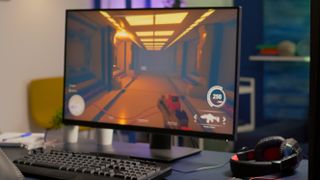
The list in brief
1. Best Overall
2. For Gaming
3. Best 32-inch
4. Best 27-inch
5. For Creatives
6. With USB-C
7. Shopping Tips
If you want sharp image quality, 4K resolution is a good place to be in 2024. Sure, there are 8K screens and even more modest 6K ones making the rounds these days, but they cost a pretty penny. On the other hand, lower resolutions deliver higher frame rates while using the best graphics cards. However, 3840 x 2160 sits at the upper echelon of premium viewing experiences for what our eyes can perceive.
For years, 4K resolution was a luxury not achievable for reasonably priced PC monitors. But as these high-resolution screens have become more commonplace and the bleeding edge has turned to high refresh rates and full-array local dimming, a relatively large assortment of budget 4K monitors allow you to take the plunge without breaking the bank.
Below are the best budget 4K monitors we've tested. Thankfully, most of these monitors sell for under $400, allowing you to devote funds to other critical gaming components.
The Quick List

Best Budget 4K Computing Monitor
The Samsung UR59C is our overall pick among budget 4K monitors due to its all-around performance. Samsung starts with a 32-inch VA panel, which hit nearly 3,000 nits in our testing. For folks sitting in front of their monitor 8 hours a day, you'll appreciate the rich color (with calibration) and sharp text. As of this writing, the UR59C retails for $379.

Best Budget 4K Gaming Monitor
The Asus TUF Gaming family is known for providing value, and the TUF Gaming VG289Q does just that. It offers a 4K resolution at 60Hz with AMD FreeSync support, along with accurate color. While it might not be able to hang with 144Hz competitors, it is a cost-effective choice for budget gamers at $289.
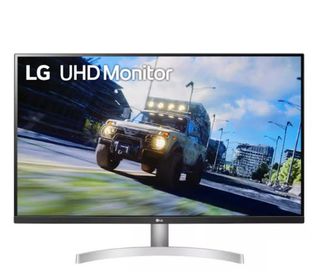
Best 32-inch Budget 4K Monitor
The LG 32UN500-W is another 32-inch 4K monitor that drives home the value angle. The monitor retails for around $250 and provides good contrast and accurate colors. Despite its low price, LG includes a pair of integrated 5-watt speakers and AMD FreeSync support for budget gamers.
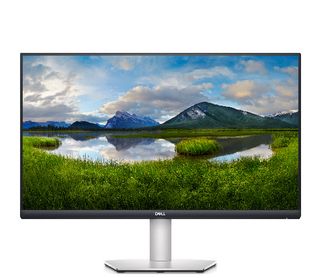
Best 27-inch Budget 4K Monitor
For those that want 4K resolution in a slightly smaller monitor, look no further than the Dell S2721QS. It measures 27 inches across, includes two HDMI 2.0 ports, one DisplayPort 1.2 port, and dual 3-watt speakers. You'll also find a three-year warranty and a street price of around $300.
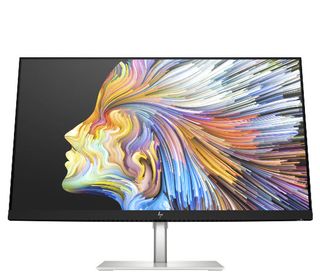
Best Budget 4K Monitor for Creatives
If you want accurate color on the cheap, the HP U28 is a compelling product. In particular, the U28 accurate blankets sRGB and P3 color spaces without calibration. It also features an adjustable stand that offers swivel and pivot (to portrait) functionality.
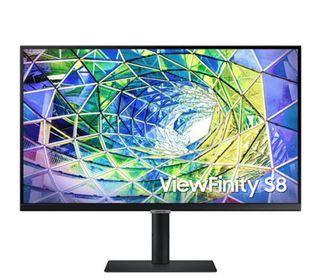
Best Budget 4K Monitor With USB-C
While we expect to see DisplayPort and HDMI ports on budget 4K monitors, the ViewFinity S80UA ups the ante with USB-C connectivity. It can charge devices via USB-C at up to 100 watts and provides three USB-A ports for your peripherals.
Best Budget 4K Monitors You Can Buy Today
Why you can trust Tom's Hardware
Best Budget 4K Computing Monitor
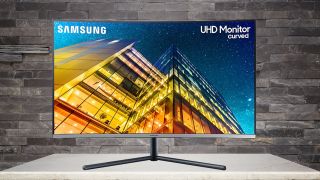
1. Samsung UR59C
Our expert review:
Specifications
Reasons to buy
Reasons to avoid
The Samsung UR59C is the best budget 4K monitor, offering a 32-inch VA panel with accuracy and curves. Image quality is superb, with bold, accurate colors and clear text after calibration. When we tested in sRGB mode, we recorded a color error of 4.3dE with visible errors, but our calibration (see our recommended settings on page 1 of the review) got it down to 0.9dE. So your web and games should look as intended. The UR59C also offers fantastic contrast, as expected from a VA panel, hitting an impressive 2,590.5:1 after calibration.
Ultrawide screens typically offer more noticeable curves, but despite its 16:9 aspect ratio, the UR59C's1500R curve is pronounced and beneficial, allowing us to keep more windows in view.
This monitor isn't fit for serious gaming, but casual players can make it work. The UR59C has a 60 Hz refresh rate, 4ms response time, and no FreeSync or G-Sync to fight screen tears. You'd get noticeably better response times and input lag scores from a 75 Hz screen. But games didn't look bad with its high contrast and the pixel density of a 32-inch, 4K screen. So if you're games that aren't graphically intense or at lower settings and you have a speed enough graphics card that can consistently hit 60 frames per second (fps), you can enjoy blur-free gaming on the UR59C.
More: Samsung UR59C review
Best Budget 4K Gaming Monitor
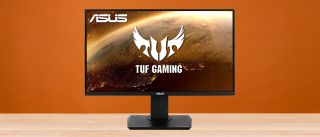
2. Asus TUF Gaming VG289Q
Our expert review:
Specifications
Reasons to buy
Reasons to avoid
You’ll have to pay a hefty price for a monitor that can push 8.3 million pixels at a 144 Hz refresh rate. The best budget 4K gaming monitor, the Asus TUF Gaming VG289Q, is a slower 60 Hz but fights screen tears with FreeSync. Yes, input lag is significantly larger than what you’ll find on a 144 Hz monitor, as is response time. But this is an excellent option if you’re working with a budget graphics card and want your games to look detailed and realistic. SDR games looked extra colorful on the VG289Q, and dynamic contrast brought subtle visual benefits, like added dimension. However, there are screens on this page with better contrast.
HDR isn’t as fantastic as you’ll find on a monitor with a full-array local dimming (FALD) backlight or an edge array backlight, but shadows and highlights looked more distinct, and we enjoyed the color boost.
For more premium high-res gaming screens, check out our Best 4K Gaming Monitors round-up.
More: Asus TUF Gaming VG289Q review
Best 32-inch Budget 4K Monitor
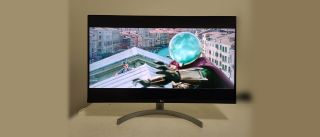
3. LG 32UN500-W
Our expert review:
Specifications
Reasons to buy
Reasons to avoid
If the best budget 4K monitor for you is in the 32-inch range, check out the LG 32UN500-W Contrast is a top consideration for image quality, and the 32UN500-W’s VA panel didn’t disappoint in our benchmarks, hitting 2,353.9:1 out of the box. In addition, the 32UN500-W’s native color gamut is DCI-P3, and it covers that color space accurately without any visible errors.
Again, as a budget 4K monitor, the 32UN500-W isn’t winning any HDR prizes. Color lacks the expected pop, and overall the image doesn’t provide a noticeable boost over SDR.
But the 32UN500-W also thoughtfully includes two 5W speakers and even AMD FreeSync to fight screen tears during casual gaming. In general, it delivered popping colors with deep blacks, making it a great fit for your favorite 4K movie and the like.
More: LG 32UN500-W review
Best 27-inch Budget 4K Monitor
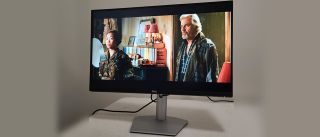
4. Dell S2721QS
Our expert review:
Specifications
Reasons to buy
Reasons to avoid
The Dell S2721QS earns the title of best 27-inch budget 4K monitor with a bright screen, reliably accurate image, and useful add-ons. Those bonus add-ons include the ability to connect multiple PCs and view them simultaneously via picture-in-picture or picture-by-picture and an optional app that makes it easy to calibrate the screen or arrange up to 6 windows in various preset layouts. The latter is a productivity boon.
HDR isn’t this monitor’s strong suit. We recorded undersaturated color in this mode, as well as visible grayscale errors. And this monitor doesn’t have the speed or Adaptive-Sync (FreeSync or G-Sync) to make it an appropriate gaming screen.
But in terms of image quality, this is a bright screen, hitting 393 nits in our testing, along with solid contrast for an IPS monitor (1,101:1). You can also expect accurate colors. We recorded just a 2.6dE error with sRGB color.
For a 27-incher with greater port selection, see our Philips Brilliance 279P1 review.
More: Dell S2721QS review
Best Budget 4K Monitor for Creatives
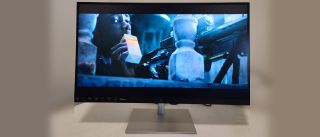
5. HP U28
Our expert review:
Specifications
Reasons to buy
Reasons to avoid
You should probably opt for a professional monitor if you're doing professional work. Pro monitors are known for offering exceptional accuracy for a premium price. But with monitors continuously improving, we’re at a point where you can find monitors with pro-level accuracy in key areas, like color, just without the pro-level price tag.
The HP U28 is one such screen and the best budget 4K monitor for creatives. Of course, none of the monitors on this page are color slouches, but the U28 stands out with its ability to accurately cover both the sRGB and P3 color spaces with just a switch in the OSD and no calibration. You also get an adjustable stand that allows height and swivel adjustments and the ability to flip into portrait mode, offering plenty of flexibility for creative work.
However, HP’s U28 comes at a cost premium. While not as pricey as professional monitors, the U28 is the most expensive monitor on this list as of this writing.
Still, with a USB-C port letting you charge laptops (or other devices), you may be able to reduce cable clutter, and there are many other ports here too. With that bonus in mind and creative-level accuracy, the U28 is great for feeding your hobby or even career.
More: HP U28 review
Best Budget 4K Monitor With USB-C

6. Samsung 27-inch S80UA
Our expert review:
Specifications
Reasons to buy
Reasons to avoid
The Samsung 27” S80UA is a little more expensive than the other monitors on this page, but you won’t have to worry about image quality. It’s super colorful for a budget screen, covering 95% of DCI-P3, according to our testing, and accurately. You can also opt for sRGB mode, which also offers a low color gamut error of just 2.8dE.
Great for productivity, the S80UA has a great port selection, plus a USB hub. You can add three USB-A ports to your PC by connecting the monitor via USB-C. It can also charge devices via USB-C at up to 100W, so you may be able to ditch your ultraportable laptop’s charger.
You also have DisplayPort and HDMI options, and even a headphone jack. But there are no speakers, and like many budget 4K screens, HDR is a bust. You’re better off watching your HDR movies in the monitor’s SDR modes, but color will still look great. On top of that, the stand is reliable, even in portrait mode, but is a little low, despite height adjustment.
More: Samsung 27-inch S80UA review
Quick Shopping Tips
When looking for the best budget 4K monitor, keep this in mind:
- What size do you need? For a budget monitor, 32 inches is a nice sweet spot, providing ample screen space while still fitting atop a desk. If you don't need to share the screen, consider 28-inch and 27-inch screens. They're common in this price range and generally less expensive.
- Decide the monitor’s main purpose. For gaming, higher refresh rates and Adaptive-Sync (AMD FreeSync or Nvidia G-Sync) are priorities, alongside a beefy graphics card. You should have a minimum of a GTX 1070 Ti or RX Vega 64 for medium settings at 4K or, for high or better settings, an RTX-series or Radeon VII. For general productivity or entertainment, look for high contrast for high image quality. Creatives should strive for accuracy. For more, see How to Buy a PC Monitor, plus our Best Gaming Monitors list.
- Errors under 3 Delta E (dE) are generally invisible to the naked eye. A monitor with a 5dE color error, for example, probably has colors that look visibly off. Accuracy is a bigger priority for creative work.
- Do you need HDR? A 4K monitor with the right HDR implementation makes 4K/HDR content look much better than it would on a regular, SDR monitor. While many 4K monitors support HDR, few budget ones deliver it with noticeable impact. If you want a monitor that makes the HDR upgrade worth it, consider increasing your budget or opting for a lower resolution to save money. Read How to Choose the Best HDR Monitor for more.
- Consider ports and other features. Do you need HDMI 2.1 and/or the latest DisplayPort (1.4)? How important are USB Type-A ports to you? Do you want USB-C for charging or a single-cable setup? Speakers and the stand’s ability to tilt, swivel or rise are also considerations.
Finding Discounts on the Best Budget 4K Monitors
Whether you're shopping for one of the screens that made our list of best budget 4K monitors above or something else, you may find savings by checking out our best monitor deals page, along with our lists of Dell coupon codes, Lenovo coupon codes, LG coupon codes, HP coupon codes, Monoprice coupon codes and Newegg promo codes.
Stay on the Cutting Edge
Join the experts who read Tom's Hardware for the inside track on enthusiast PC tech news — and have for over 25 years. We'll send breaking news and in-depth reviews of CPUs, GPUs, AI, maker hardware and more straight to your inbox.
Brandon Hill is a senior editor at Tom's Hardware. He has written about PC and Mac tech since the late 1990s with bylines at AnandTech, DailyTech, and Hot Hardware. When he is not consuming copious amounts of tech news, he can be found enjoying the NC mountains or the beach with his wife and two sons.
-
sreams Personally, I think the best budget 4K monitor is not a monitor. It's a TV. $350 gets you a decent Samsung 50" 4K TV that does 4:4:4 color at 60Hz with minimal latency. I use one, and it's like having a 4x4 grid of 25" 1080p displays without the bezels.Reply -
FatiguedGamer I tend to agree with you; I picked up a 55Q65FN a year or so ago for about $400 and could not be happier. If I need high refresh rate I drop back to 1440p with 120hz, or enjoy 4k 60hz. For the price you simply cannot beat it.Reply
I use it daily for work, gaming you name it is great. I do need to mount it to the wall though viewing distance right now is probably less than optimal ;)
sreams said:Personally, I think the best budget 4K monitor is not a monitor. It's a TV. $350 gets you a decent Samsung 50" 4K TV that does 4:4:4 color at 60Hz with minimal latency. I use one, and it's like having a 4x4 grid of 25" 1080p displays without the bezels. -
Gurg Curious at what distance from the 50-55" 4k TV screen your eyes are? I have a 32" Samsung 4K monitor on my desk corner which for gaming and casual use my eyes are 24-28" away from screen. I also have a 50" Samsung 4K TV but on a stand roughly 5' from my head. Both screens appear side by side and relatively equivalent in size to my eyes and each pretty much fill my direct vision glass frames frontally when sitting in my desk gaming chair. If the TV screen was on my desk at same distance as my monitor it would seem way too large for me.Reply -
FatiguedGamer Yeah, it is at probably at about 30".... I fully intended to wall mount it behind my desk to slightly increase the distance but simply haven't gotten around to it.Reply
The majority of my time working I just use the bottom half for active apps with less used items up top. For gaming I don't really notice an issue with it; Sim racing feels like sitting directly in the car. For other titles if I don't feel like staring at a wall of screen, I just run windowed while I'm watching a show or what not. Is it for everyone probably not but for the price... I couldn't beat it.
That said I did have to turn that brightness down... when I fired it up that first time it was like staring at the sun.
Gurg said:Curious at what distance from the 50-55" 4k TV screen your eyes are? I have a 32" Samsung 4K monitor on my desk corner which for gaming and casual use my eyes are 24-28" away from screen. I also have a 50" Samsung 4K TV but on a stand roughly 5' from my head. Both screens appear side by side and relatively equivalent in size to my eyes and each pretty much fill my direct vision glass frames frontally when sitting in my desk gaming chair. If the TV screen was on my desk at same distance as my monitor it would seem way too large for me. -
mickrc3 I sit about 33 inches away from my Acer 48in 4K monitor primary monitor (60yr old eyes). I was using a 50in 4K Vizio before the monitor. I chose getting a monitor over the TV for the DisplayPort interface. My GTX-1080 card only has 1 HMDI output and I have that hooked to a 40in 4K TV (secondary use as monitor, mostly for TV). I have the Acer and the "real budget" Sceptre 27in 4K (bought 3 years ago on Black Friday for $149) hooked up via DisplayPort. Not for gaming, but for database development. If I need the real estate I run all three 4K monitors at the same time but usually the 40in is for keeping up on the news.Reply -
andrechalella There's an error in the section 4. Dell S2721QS. It actually DOES have adaptive sync (AMD FreeSync).Reply -
XtraXi I'll read this afterwards, need to find a good gaming monitor with ips..Reply
Hoping tearing is something of the past without g sync on the monitor itself.. -
mickrc3 I've made a few changes. The secondary 27in Sceptre has been replaced (died after only 2 years of use) with a 28in Samsung U28H75 purchased used locally. Great little monitor. The 48in Acer remains my primary display and the 8 year old 40in Seiki continues to soldier on as a TV for primary use but still is hooked to the PC via HDMI for use as another 4k display when needed. The Duke GTX-1080 has been retired for a EVGA RTX-3070 ti FTW3. For my kid's computers I have one running a Vizio 40in 4K TV with a Acer 28in KG281 4K secondary display while the other one has a LG UL500-W 32in 4K with another Sceptre 27in 4K secondary display. My wife's computer is running a 40in 4K TV as the primary display for her limited gaming use (mostly solitaire and slot machine programs). My spare computer is using a 43in HP3XE86A8 4K Business display since it is not a gaming machine. I've got three more 32in LG monitors packaged up with Ryzen Zen 3 computers I built for my brothers but have not been able to deliver yet due to Covid. Really, really sick for about a month. Covid is no joke.Reply -
mickrc3 Reply
I sit 28 inches away from my Samsung 55inch QLED 8K TV. The text is scaled to 175%. It is like having four 28in 4K displays together without bezels. It is the last step of many monitor upgrades over the last decade. I bought it this spring. It replaced a 49in 4K Acer computer monitor (purchased Feb 2018) which replaced a 50in Vizio 4K TV (M series, Summer 2016), which replaced a 43in Vizio 4K TV (M-series, Fall 2015), which replaced a 40in Seiki 4K TV (Spring 2013), which replaced four Acer 23in FHD monitors (pre-2010).Gurg said:Curious at what distance from the 50-55" 4k TV screen your eyes are? I have a 32" Samsung 4K monitor on my desk corner which for gaming and casual use my eyes are 24-28" away from screen. I also have a 50" Samsung 4K TV but on a stand roughly 5' from my head. Both screens appear side by side and relatively equivalent in size to my eyes and each pretty much fill my direct vision glass frames frontally when sitting in my desk gaming chair. If the TV screen was on my desk at same distance as my monitor it would seem way too large for me.
I bought the big monitors to help with my coding and spreadsheets. I'm not a gamer but I do play some simulation type games from time to time - not FPS typically.
Now initially when I put the first TV on my desk to replace monitors I felt overwhelmed by the size and that was the 40in Seiki. But as time wore on I got used it until I found myself constrained by the amount of data I could fit on the screen. Since then with each increase in size the cycle continued. I went from the 50in TV to the 49in monitor in order to adjust the text scale from 150% to 100% which gave me more data on the screen. But I found myselft needing more room from time to time so I ended up adding a Samsung 4K 28in on one side and remounted the 40in Seiki above the desk monitor as a TV or third monitor. But all of the side to side and up and down head movement caused some pain as I had some questionable disks in my neck. Last year I had to have a complete cervical fusion and so I had to change my computer monitor arrangement when I healed up. That led to the 8K purchase.

